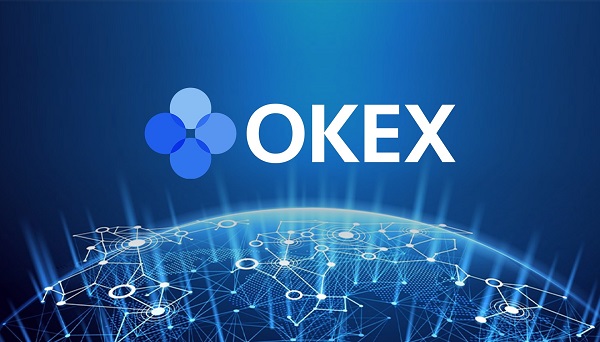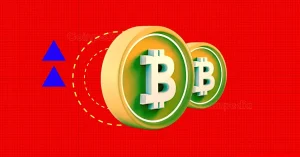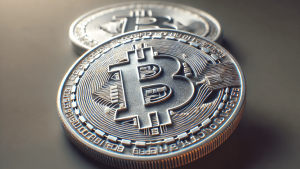What is Solana (SOL) Pay, and how does it work?

PayPal was a massive innovation in the payments processing industry. The financial brainchild of Peter Thiel, Max Levchin and eventually, Elon Musk aimed far ahead of its time, facilitating instant payments between customers, businesses and more while utilizing the internet.
Solana (SOL) Pay is considered by many to be the next innovation in the payments processing arena, facilitating payments while taking nonfungible tokens (NFTs) and Web3 into account. Some are going so far as to call Solana’s new payment protocol the Visa or PayPal of Web3. This post will break down Solana Pay and how it works so you can decide whether the project is all it’s cracked up to be.
But first, it’s vital to understand Solana before getting into the digital payment platform Solana Pay.
Related: What is Web3: A beginner’s guide to the decentralized internet of the future
What is Solana?
Solana was founded in 2017 by Anatoly Yakovenko, a software engineer with a background at Dropbox and other big tech companies.
Yakovenko believed that while other blockchains are efficient or at least working toward efficiency, many of them fail to factor in time. Instead of every block relying on a standardized clock, each block runs on the local time of their relevant node.
Why is this a problem? Without a standardized clock, transaction timestamps will vary for each block and the time of confirmation is yet another factor that all nodes must validate. The more factors a node has to validate, the slower the transaction time.
On Solana, all nodes run on the same clock, removing one validation factor and speeding up the network as a result. Yakovenko refers to this consensus method as proof-of-history (PoH) — a modified version of proof-of-stake (PoS) that factors in time for verification purposes.
Validation works similar to proof-of-stake in Solana’s case. Solana is just using time as a historical record of proof on top of the proof-of-stake method. As a result, Solana can process an average of 65,000 transactions per second with minimal fees.
Solana is also a smart contract decentralized finance (DeFi) platform competing with Ethereum (ETH). Both platforms offer all sorts of decentralized finance DApps, some with their cryptocurrencies as well. Instead of Ether at the center of it all, the Solana token is SOL.
SOL is used to transact within the Solana network, to stake for governance purposes and is given as a reward to validators. Otherwise, Solana has its own decentralized exchanges to trade the various tokens built on top of its platform. Every DApp built on Solana is sure to have its own SOL-compatible token, and on-chain decentralized exchanges provide an accessible way to buy said tokens
Now, because Solana’s PoH consensus allows it to process tens of thousands of transactions per second without fees, Solana Labs is building Solana Pay to provide that transaction power to the masses.
History of Solana Pay
While Solana Labs were a big part of the Solana Pay development process, other companies were involved as well. According to Shere, Circle, Checkout.com, Citcon, Phantom, FTX and Slope all played a part in establishing the foundation for the digital payment platform Solana Pay.
Team Circle states that “73% of businesses believe accepting digital payments is fundamental to growth in 2022,” according to a study by Visa. That same study revealed that 59% of those businesses “already are, or plan to, use only digital payments within the next two years.” These statistics were part of the foundation for Solana Pay, as Solana Labs, Circle and their other partners want to be ready for these early adopters. Shere joined Solare Labs in 2021 to work on Solana Pay.
How does Solana Pay work?
Digital payment platform Solana Pay offers businesses and customers immediate, fee-free transactions that allegedly have zero effect on the environment by harnessing the power of the Solana blockchain network. The network claims to support 65,000 transactions per second and provides an easy-to-implement software development kit for businesses to integrate the product.
Developers building DApps on Solana can integrate Solana Pay for easy transactions, just as traditional retailers can implement it if they have a Solana wallet. That accessibility is why many compare Solana to PayPal, stating that Solana can do for crypto payments what PayPal did for traditional online payments.

Related: What is Solana (SOL) and How Does it Work?
Advantages of Solana Pay
Of course, Bitcoin (BTC), ETH and other cryptocurrencies claim to provide a near-instant crypto payment, but these networks (especially Ethereum) are costly and not as instant as they might claim. For instance, Bitcoin features an average of seven transactions per second, while Ethereum averages thirteen transactions per second. Both Bitcoin and Ethereum are harmful to the environment as well. Solana’s network is faster and cheaper, which is attractive to businesses and customers.
Solana Pay allows its users to pay in real-time in SOL or any other supported Solana token, such as real-time payments in USD Coin (USDC), without involving a third-party such as a bank or payments processor. Moreover, Solana Pay doesn’t allow for chargebacks, removing a costly issue that traditional merchants often face.
Also ideal for merchants, Solana Pay offers detailed reports on every transaction such as wallet destination, currency type, the transaction amount and text fields for the merchant to describe the said transaction. These details are kept entirely private from the rest of the network, ensuring that both the customer and the merchant can transact without prying eyes.
As the head of payments at Solana Labs, Sheraz Shere, states in his blog post announcing Solana Pay, the Solana team wants the world to look at Solana Pay as something bigger than allowing users to “pay with crypto.” Instead, Shere views Solana Pay as a platform where “all currencies are on-chain and used for a wide range of transactions,” he says.
Disadvantages of Solana Pay
Solana Pay, alongside the Solana network, itself, is in an early stage of development. Businesses who switch over to Solana Pay run the risk of losing their assets due to a programming error or attack on the network, for instance. It’s possible to lose assets due to basic user errors if the business isn’t crypto-knowledgeable, as managing a crypto wallet doesn’t come naturally to everyone.
Also, while Solana is faster than many of its competitors, Ethereum is still a much bigger platform overall. Ethereum has many more DApps and a larger user base than Solana, and Ethereum’s eventual move to Ethereum 2.0 could prove problematic for Solana as well.
Solana Pay for merchants
While Solana Pay might sound complex, integration for merchants is pretty simple. To start, a merchant must establish a Solana wallet, which they can do individually or through the FTX exchange.
From there, the merchant must implement some Solana Pay code into their website and encode their subsequent crypto payment request link into a QR code. Now, customers can pay for goods and services both digitally and in person by simply scanning a QR code within their SOL-supported wallet.
Solana Pay for developers
While Solana Pay has its base use case in offering merchants a way to accept crypto easily, the Solana community can propose changes and present new use cases. Solana Pay’s documentation invites users to open up a Github issue if they want to propose changes and updates.
In his blog post regarding Solana Pay, Shere notes that Solana Pay could facilitate physical and digital transactions via NFTs. His example revolves around buying a pair of shoes. A customer might buy a pair of shoes using Solana Pay, and walk out of the store with two NFTs.
The first NFT allows her to use those shoes in the metaverse, and the second is a receipt for her purchase. That receipt doubles as entry into the retailer’s exclusive club of NFT holders that receive discounts and other bonuses from the retailer.
Wallets that support Solana Pay
Solana Pay is currently supported in three wallets: Phantom, Crypto Please and FTX. Phantom is a Solana-only wallet for buying, holding, and swapping crypto and NFTs. Crypto Please is another Solana-focused wallet enabling users to send crypto over Telegram, Whatsapp and more. Finally, FTX is an exchange that supports all types of cryptocurrencies including Solana. More wallets that support Solana Pay are coming soon.















